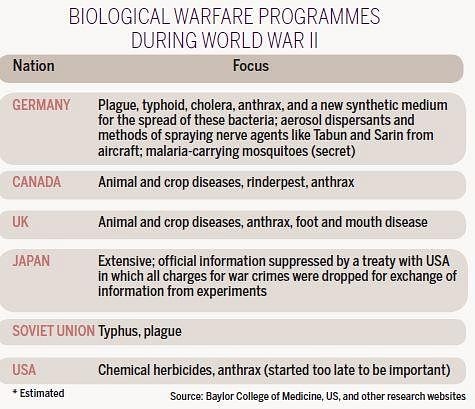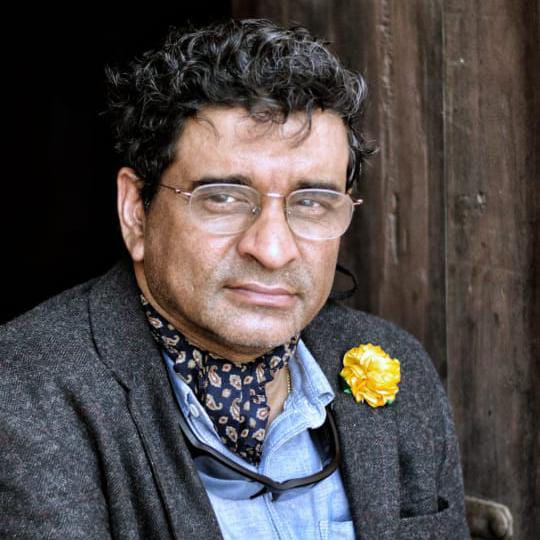Can we Become Wiser from the Havoc of COVID-19?
Abstract: COVID-19 sent the whole world and economy into a tailspin. This article first explores the brief history of use of biological weapons. Furthermore, it encapsulates the debates surrounding the biological weapon convention in general and COVID-19 in particular. Finally, the article highlights India’s ability to fight back a pandemic and her resilience that was tested in the initial phase of COVID-19 and during the second wave.
Humans are the only beings with an inborn instinct to carry out large-scale destruction. They have damaged the environment for long and also found waging war against fellow beings. Inherent to this nature is a capacity to harness or create necessary and fatal weapons that can destroy enemies and unfortunately also have a prolonged impact on the environment. Among them, the techniques of using of biological agents against humans and agriculture is as old as civilization. Ancient Indian stories and even the Indian treatise Arthashastra defined among many other methods the nurturing of ‘Vish Kanyas’ – women brought up by administering small doses of poison who later became assassins with even their kiss being fatal. Poisoning of wells and livestock, scorching fields to render them barren was a common tactic among other forbidden activities.
In more recent times, World War I saw the widespread use of poisonous mustard gas, producing fatal and wretched casualties in thousands. This catastrophic use and its devastating effects led to the 1925 Geneva Protocol attempting to ban bioweapons. However, many countries continued producing bioweapons secretly, which include but was not restricted to Japan, the United States of America (USA), the United Kingdom (UK), Germany, and the former Soviet Union. The whole world saw the horror of the concentration camps and what happened in them and many were subjected to all kinds of human experiments.1 It is also believed that the Japanese killed Chinese prisoners by experimenting on them using anthrax, cholera, plague and other pathogens.2 The table below indicates the bioweapons programmes during World War II.

Even after World War II, many countries were known to have ongoing bioweapons programme such as the US and Germany.3 As of now, the regimes in Iraq and Syria have been alleged to have used chemical weapons against their own populations.
A Failed Biological Weapons Convention?
The Biological Weapons Convention (BWC) came up in 1972 and entered into force on 26 March 1975 and almost has universal membership with 183 States Parties. The BWC supplements the 1925 Geneva Protocol, which had prohibited only the use of biological weapons and effectively prohibits the development, production, acquisition, transfer, stockpiling and use of biological and toxin weapons4 . It was the first multilateral disarmament treaty banning an entire category of weapons of mass destruction (WMD). Despite its noble intentions, the treaty lacks any significant provisions for enforcement or verification. Unlike the nuclear weapons program, this treaty lacks any international inspections regime to ensure treaty compliance. Many policymakers argue that such a measure would provide a backlash against genuine biotech research and cause harm to legitimate research. As a result, there is a possibility that some signatories to the treaty could have maintained active (covert) bioweapons programs.5
Lessons from COVID-19
The inception of COVID-19, allegedly from a Lab in Wuhan (China) shows how vulnerable humans are towards invisible bioweapons. The pandemic sent the whole world and economy into a tailspin. The outbreak allegedly began from Wuhan in central China, and some specialists are of the opinion that the virus could have leaked from the Wuhan Institute of Virology (an institute believed to be a part of Beijing’s secret bioweapons programme).
There are various known potential bioweapons agents in the world and some of them are indicated in the chart below.

Is India ready for a Bioweapon Attack?
The possibility of any state vs state war using biological weapons in near future is very little. However, there is always a possibility that the India could come under a bioterror attack (could even be covertly supported by the adversary). What remains to be answered is how prepared is India for a similar attack of outbreaks in the foreseeable future. India has ratified the 1972 biological weapons convention, and maintains research and development institutions of toxicology, biochemical pharmacology and other associated fields. In military arena, India has a biodefence programme and the Defence Research and Development Establishment (DRDE) located at Gwalior in Madhya Pradesh is responsible to ensure countering bio threats such as anthrax, brucellosis, cholera, plague, smallpox, viral haemorrhage fever and botulism.
India has made good investments in the field of biotechnology and pharmacology. India’s ability to fight back a pandemic and her resilience was tested in the initial phase of COVID-19 and its second wave in India (Apr-May 2021). Despite representing almost, the sixth of human population the death caused due to the outbreak was comparably quite low,6 that is 334 per million.7 The fightback demonstrated an ability to mass-produce vaccines, which included one an indigenously developed vaccine, which has the World Health Organisation’s (WHO’s) approval. All this was possible only owing to the extensive help from the indigenous pharmaceutical industry, scientific community and defence labs.
The COVID response has shown that initially India’s preparedness to tackle a bioterror attack range was limited. Doctors and specialists had expressed reservations about how initially the Indian medical system was overwhelmed and was inadequately prepared. However, the speed with which India reacted is a case study by itself. This endeavour included vaccinating over 100 Crore (1 Crore = 0.01 Billion) people within a record time and also developing and delivering over 707 Lakh (1 Billion = 10,000 Lakhs) vaccines for 95 countries under the vaccine Maitri scheme.8 It is important to note that some other states in the world had not shown the similar human approach taken by India. In fact, the US President Biden had invoked the Defence Production Act of 1950 to prevent American manufacturers from supplying critical materials needed by Indian vaccine manufacturers.9
What has not been established is whether COVID-19 is a bioterror weapon that went awry or a runaway virus from a lab. The world had rallied after the use of Biological and Chemical agents in the aftermath of World War I and restricted their uses. If anything, the COVID-19 is a trailer of what could happen, if the world does not rally together to stop the possibility of any state or non-state actor creating biological weapons in the future.
Download Complete Article [PDF]
- 1. “Nazi Medical Experiments,” Holocaust Encyclopedia, https://encyclopedia.ushmm.org/content/en/article/nazi-medical-experiments
- 2. Nicholas D. Kristof, “Unmasking Horror — A special report.; Japan Confronting Gruesome War Atrocity,” The New York Times, March 17, 1995, https://www.nytimes.com/1995/03/17/world/unmasking-horror-a-special-report-japan-confronting-gruesome-war-atrocity.html.
- 3. R. Roffey, A. Tegnell and F. Elgh, “Biological warfare in a historical perspective,” Science Direct, August 8, 2002, https://www.sciencedirect.com/science/article/pii/S1198743X14626343.
- 4. For more details may please see Biological Weapons Convention homepage at https://www.un.org/disarmament/biological-weapons/ accessed on 22 November 2021.
- 5. For more details on this may also read Mark Shwartz, “Biological warfare emerges as 21st-century threat,” available at https://news.stanford.edu/news/2001/january17/bioterror-117.html accessed on 21 November 2021.
- 6. May see the statistics of COVID-19 pandemic at https://www.worldometers.info/coronavirus/#countries updated on 24 November 2021.
- 7. Counter ‘one-sided’ world media narrative on govt’s pandemic ‘failure’, Jaishankar tells Indian diplomats, Indian Express available at https://indianexpress.com/article/india/counter-one-sided-world-media-na… accessed on 22 November 2021.
- 8. Vaccine supply statistics from MEA, Government of India website available at https://www.mea.gov.in/vaccine-supply.htm accessed on 22 November 2021.
- 9. Pillay, DPK “America’s Vaccine War” available at https://chanakyaforum.com/americas-vaccine-war/ accessed on 22 November 2021.








